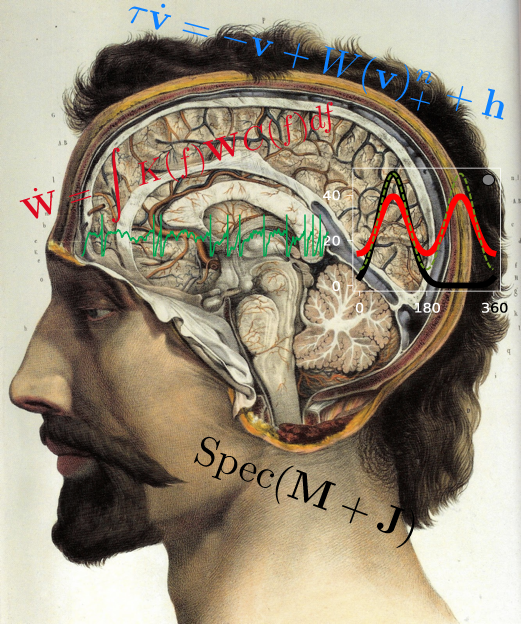
Our broad interest is in understanding how large networks of neurons, such as those in the cerebral cortex, process sensory inputs and give rise to our perception and higher-level cognitive functions through their collective dynamics and learning on multiple time scales. To shed light on the complexity of neurobiological phenomena we use simplifed mathematical models that capture core mechanistic features of the circuit and connect them to its computational goals. We use techniques from dynamical systems, statistical physics, machine learning and information theory. A second line of interest is development of new statistical and computational tools for analyzing large, high-dimensional neural and behavioral datasets. We also collaborate with different experimental labs.
Our current questions of interest include:
- How do randomness and nonnormality in the connectivity structure of networks affect their dynamics?
- How do horizontal and feedback connections in sensory cortical areas serve computations ranging from contextual modulations to dynamic representation of objects?
- How do these computations adapt to changes in stimulus statistics, and how are they related to the balance of excitationa and inhibition?
- Can the breakup of functional cell types in the early auditory system be explained by efficient coding principles?